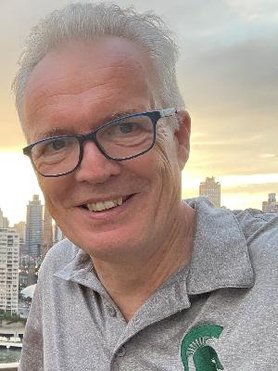

Prof.dr. G.J. (Gertjan) Medema
Prof.dr. G.J. (Gertjan) Medema
Profile
Prof. Gertjan Medema (M) is principal microbiologist at KWR since 1996. He is part-time chair on Water & Health at Delft University of Technology (Sanitary Engineering) since 2009 and was Visiting Hannah Professor on Water & Health at Michigan State University from 2018 to 2022.
His research focuses on understanding the transmission of infectious diseases and antimicrobial resistance via water systems, and how this can be prevented. This includes experimental, field and modelling research: the development of methods for detection and removal of pathogens such as viruses, bacteria, parasites and antimicrobial resistance in water, conducting Quantitative Microbial Risk Assessment, fate and transport and exposure modelling and epidemiological research on the health effects of water systems, and providing advice for the design of safe water systems and policies.
At the start of the COVID-19 pandemic, he initiated research on sewage surveillance of SARS-CoV-2 and has published on this topic and was invited for keynotes by many organizations. The work inspired many research teams to start wastewater surveillance programs in their country or region. He coordinated the ‘second-opinion’ epidemiological investigation of the Legionella outbreak in Flint, Michigan.
He is advisor of WHO on microbiological (drinking) water guidelines and QMRA since 1991 on SARS and WASH in 2003, and via WHO of the European Commission on the EU Drinking Water Directive and water reuse guidelines. He has coordinated the joint research program of the Netherlands water utilities. He is director of KWR’s WHO collaborating centre on Water Quality & Health and advisor to the WHO on waterborne pathogens and QMRA since 1991 on SARS and WASH in 2003 and ebola and WASH in 2014 and on wastewater surveillance since 2020. He is advisor of EU DG Environment on water reuse guidelines and drinking water guidelines.
Expertise
Publications
-
2024
A new Bayesian approach for managing bathing water quality at river bathing locations vulnerable to short-term pollution
Wolfgang Seis / Marie Claire Ten Veldhuis / Pascale Rouault / David Steffelbauer / Gertjan Medema
-
2024
Bacterial communities of planktonic bacteria and mature biofilm in service lines and premise plumbing of a Megacity
Composition, Diversity, and influencing factors
Anran Ren / Mingchen Yao / Jiaxing Fang / Zihan Dai / Xiaoming Li / Walter van der Meer / Gertjan Medema / Joan B. Rose / Gang Liu -
2024
Faecal contamination on lettuce irrigated with different water sources in Maputo, Mozambique
C. A. Niquice-Janeiro / A. Marques Arsénio / G. Medema / J. B. van Lier
-
2023
Building water quality deterioration during water supply restoration after interruption
Influences of premise plumbing configuration
Mingchen Yao / Yue Zhang / Zihan Dai / Anran Ren / Jiaxing Fang / Xiaoming Li / Walter van der Meer / Gertjan Medema / Joan B. Rose / Gang Liu -
2023
Capturing the SARS-CoV-2 infection pyramid within the municipality of Rotterdam using longitudinal sewage surveillance
Miranda de Graaf / Jeroen Langeveld / Johan Post / Christian Carrizosa / Eelco Franz / Ray W. Izquierdo-Lara / Goffe Elsinga / Leo Heijnen / Gertjan Medema / More Authors
-
Media
-
2023-07-16
Gertjan Medema in de media 2023
Appeared in: Magriet
-
2022-09-15
Gertjan Medema in de media 2022
Appeared in: Water online
-
2018-09-12
Zonder deze nieuwe meetmethode lagen 2500 City Swim-deelnemers in verontreinigd zwemwater
Appeared in: de Volkskrant
-
2017-08-12
In deze landen kun je beter geen kraanwater drinken
Appeared in: Nu.nl Reizen
-
2014-10-31
Kraanwater: supergezond en bijna gratis. Door Eva Schouten en Martijn van Beeten
Prizes
-
2018-9-17
IWA Project Innovation Award-Bronze winner
For Category Performance Improvement and Operational Solutions. For the Project “Thermal energy recovery from drinking water: exploitation of a renewable energy source”
IWA World Water Congress 2018
Ancillary activities
-
2009-09-01 - 2024-08-31
(Waste) water and sanitation
-
2009-09-01 - 2024-08-31
(Waste) water and sanitation